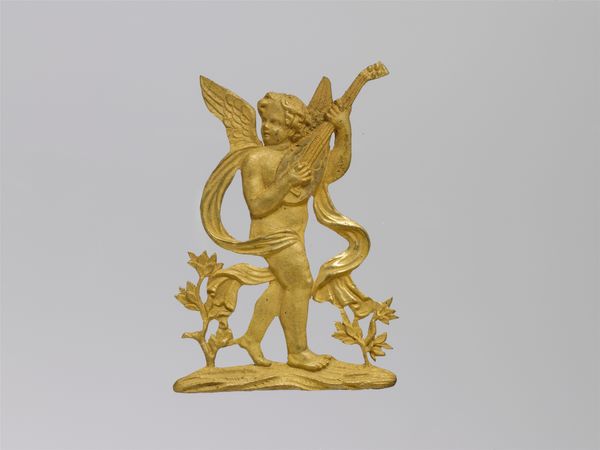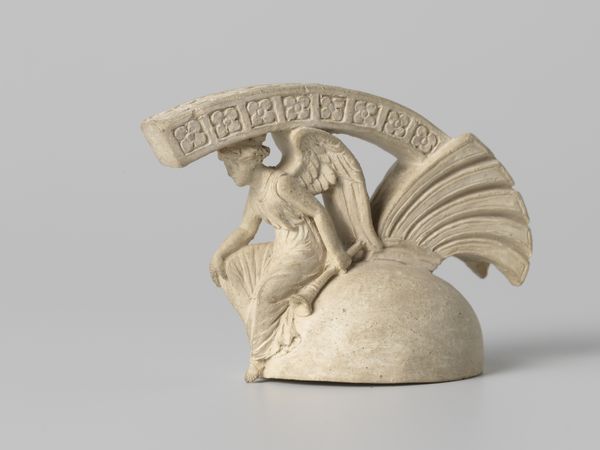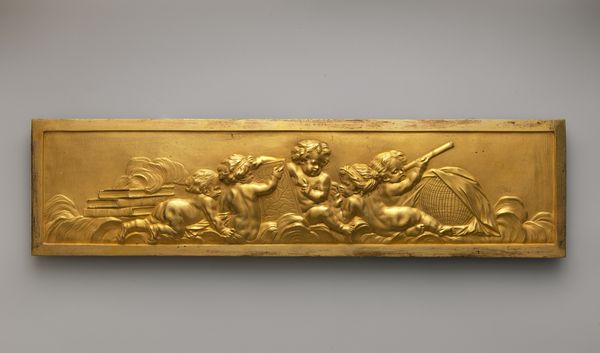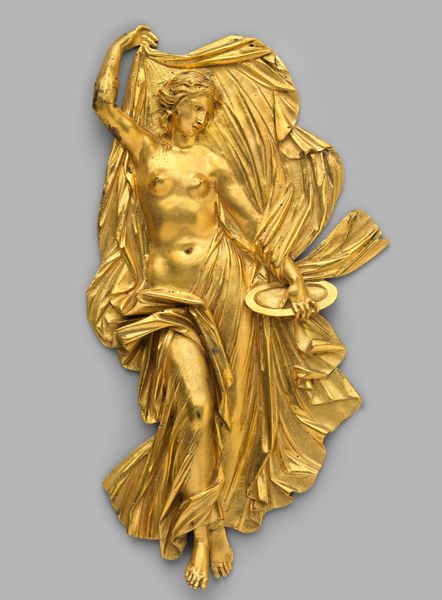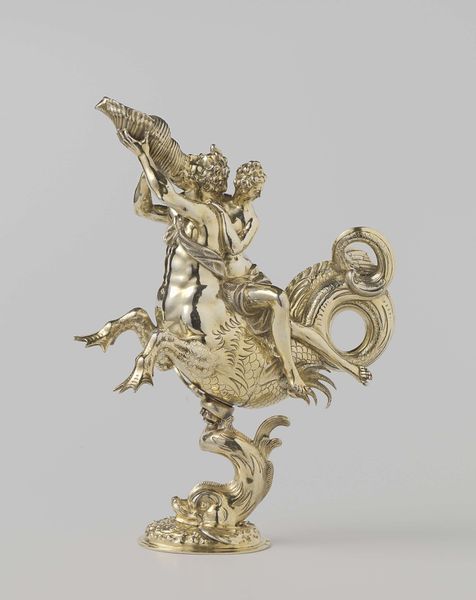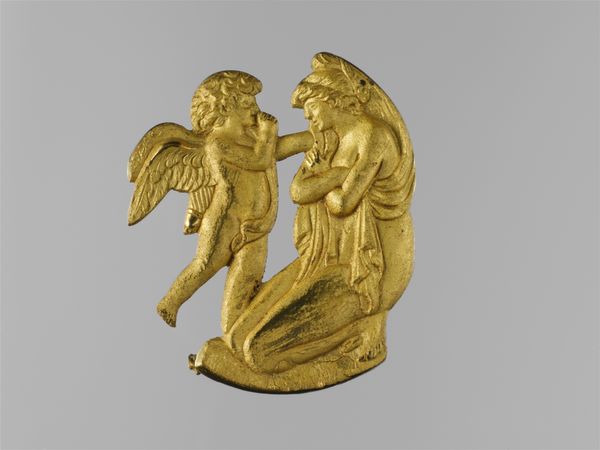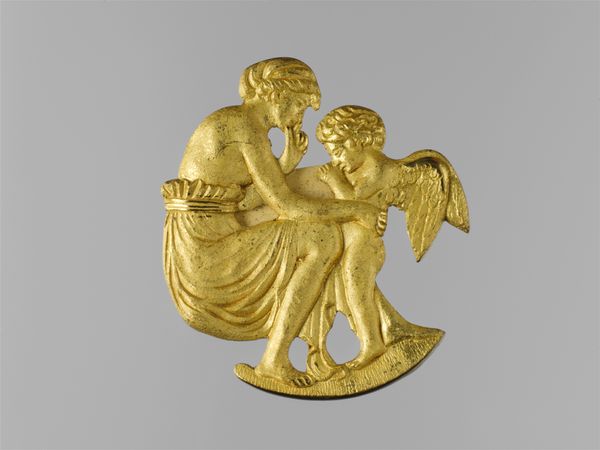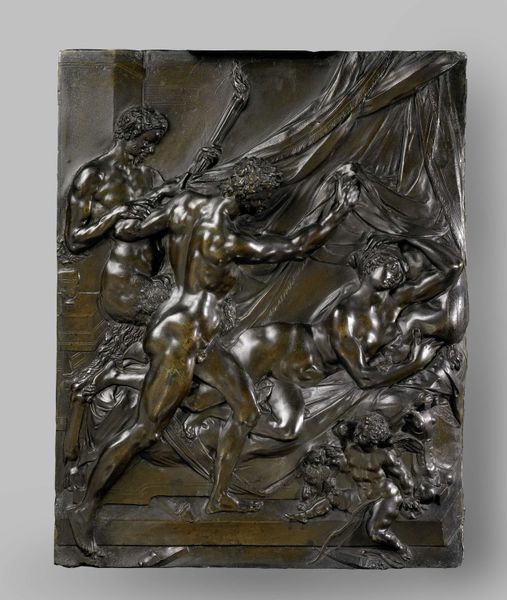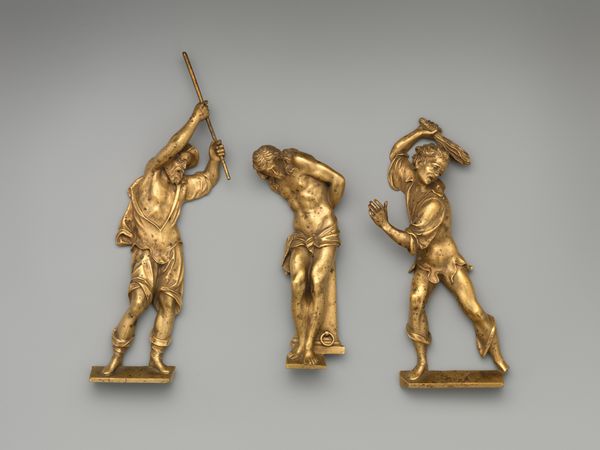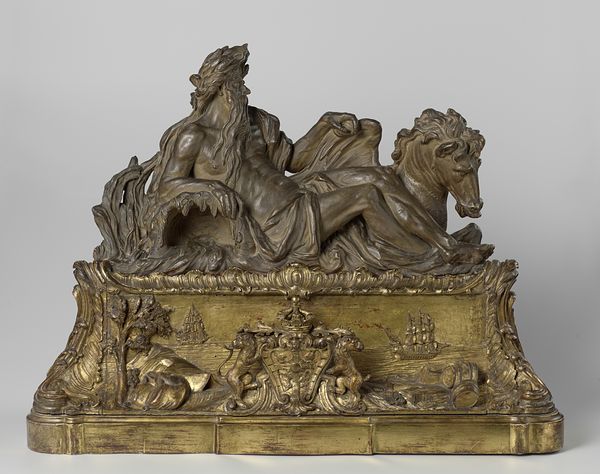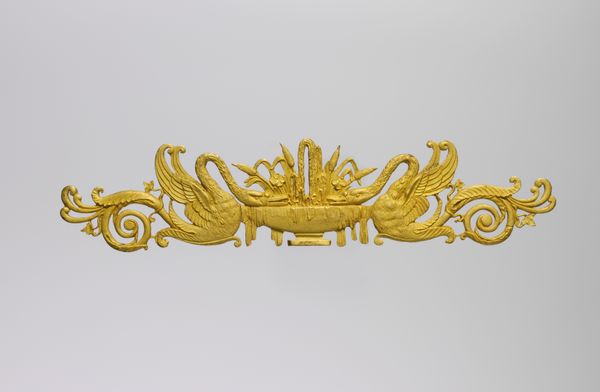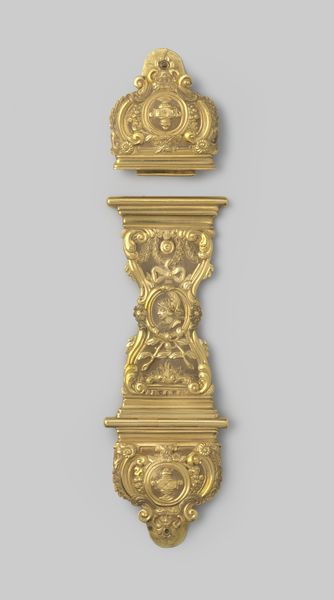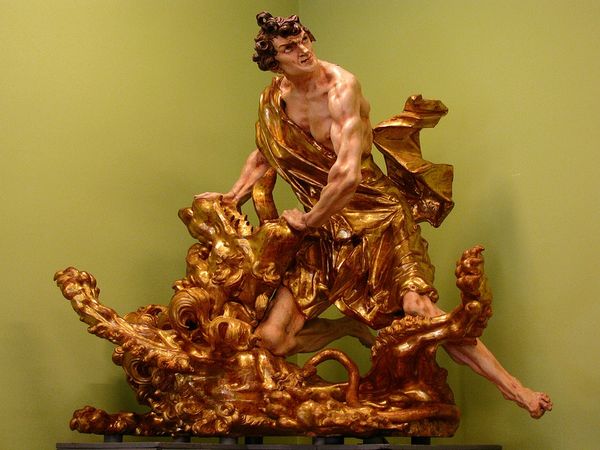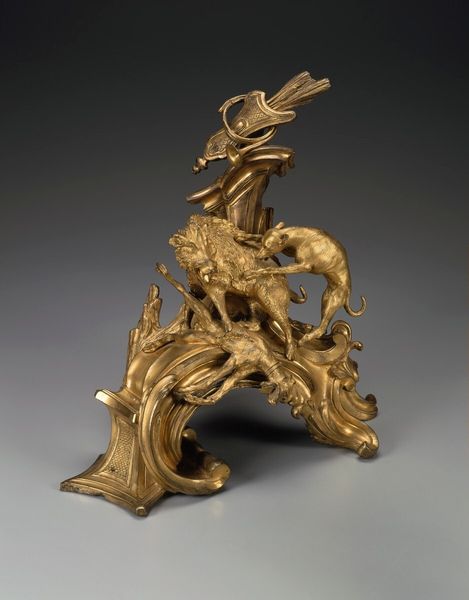
bronze, sculpture
#
neoclacissism
#
allegory
#
landscape
#
classical-realism
#
bronze
#
figuration
#
sculpture
#
france
#
nude
#
male-nude
Dimensions: 6 1/4 x 2 3/4 in. (15.9 x 7 cm)
Copyright: Public Domain
Curator: This is the "River God Appliqué," an alluring gilded bronze piece made in France between 1805 and 1835 by Henry Kellam Hancock. What are your immediate thoughts on the piece? Editor: The figure is striking. The contrast between the sharp musculature of the nude figure and the softer forms of the reeds and the urn that spill over really draws the eye. The uniform color helps maintain that dynamic, somehow. Curator: It's important to remember this wasn't meant to be displayed on its own, as we're seeing it today in the gallery. These gilded bronze appliques, such as this one by Hancock, adorned luxurious objects. The artist was hired to provide these smaller decorative components to enrich larger pieces made by other craftspeople. It's worth remembering the place and time the piece was commissioned as that also informed Hancock's vision. Editor: I can certainly see the appeal. The classical ideal, evident in the figure's pose and physique, blends seamlessly with its ornamental purpose. The composition flows, with the cascading water mirrored by the vegetation—there's a real sense of controlled, idealized nature at work. The patina emphasizes the piece's many carefully etched and raised line details. Curator: Absolutely. And the French Neoclassical movement to which this piece belongs prized exactly this combination of elegance and allegorical themes. Notice how the figure's association with a river elevates even the most mundane everyday object into something... mythic? Editor: Agreed. This is also true considering its use as functional decoration; how this element ties into a much larger network of value creation; the labour, the raw materials sourced across an empire. These details highlight complex global circuits within the luxury art and design of this era. Curator: An interesting detail indeed. So while Hancock was making these pieces in isolation, what else was influencing its style and consumption? Editor: I'd argue, without that material support this piece wouldn’t exist at all. As this bronze 'River God' demonstrates, material conditions shaped all artistic creation, and our present view, however aestheticized or formalized, has to consider this historical background of manufacture. Curator: Your mention of process is key, but it's hard to deny the immediate sensory impact that "River God Appliqué" makes on viewers even today. I will keep that in mind going forward in our tours of the museum, especially its neoclassical collections. Editor: Indeed. This tension between its internal elegance and its external life of making truly encapsulates so much of our engagement here today. Thanks!
Comments
No comments
Be the first to comment and join the conversation on the ultimate creative platform.
